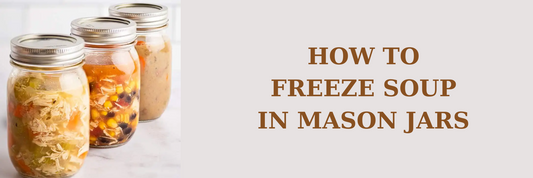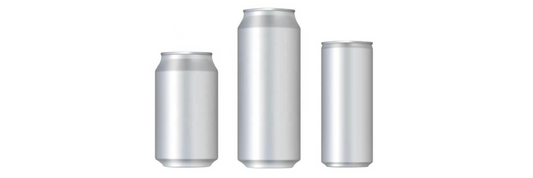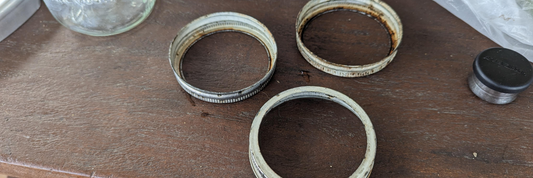Vacuum sealer bags have evolved as an effective technology for modern food preservation. By removing air from packing, they efficiently suppress oxidation, spoilage, and bacterial growth, prolonging the shelf life of diverse foods. This article discusses the many varieties of vacuum sealer bags, their sizes and dimensions, the advantages they provide, and recommended maintenance techniques to ensure peak performance.
How Vacuum Sealer Bags Work?
Vacuum sealer bags operate on a simple yet effective principle: they remove air from the packaging. This process creates a near-vacuum environment that inhibits the growth of microorganisms, prevents oxidation, and slows down the natural decomposition process.
Here's a breakdown of how it works:
- Sealing: The bag is placed over the food item, and the edges are sealed using a vacuum sealer machine.
- Vacuuming: The machine pumps out the air from the bag, creating a vacuum. This process reduces the oxygen content within the package.
- Storage: The sealed bag is then stored in the refrigerator or freezer. The low oxygen environment prevents the growth of bacteria, mold, and other harmful microorganisms.

Types of Vacuum Sealer Bags
Vacuum sealer bags come in a variety of materials, thicknesses, and features to suit different needs.
Types of Vacuum Bags by Materials
- Plastic: Polyethylene and polypropylene are common plastics used for vacuum sealer bags. They are durable, affordable, and suitable for most food items.
- Nylon: Nylon bags are known for their strength and durability. They are often used for storing heavier items or for sous vide cooking.
- Aluminum Foil: Aluminum foil bags provide excellent protection against moisture, oxygen, and light. They are ideal for preserving delicate foods or preventing freezer burn.
- Co-extruded Materials: Some vacuum sealer bags are made from co-extruded materials, which combine the properties of different materials for added durability or specific features.
Types of Vacuum Bags by Thickness
- Regular Thickness: Standard-thickness bags are suitable for most food items and offer a good balance of strength and flexibility.
- Heavy-Duty Thickness: Heavy-duty bags are thicker and more durable, making them ideal for storing larger, heavier items or for sous vide cooking.
Types of Vacuum Bags by Features
- Embossed Channels: Embossed channels help remove air more efficiently, ensuring a better seal and longer shelf life.
- Textured Surfaces: Textured surfaces can improve the grip and prevent the bag from slipping during sealing.
- BPA-Free: BPA-free bags are a safer choice for storing food, especially for children and pregnant women.
- Freezer-Safe: Freezer-safe bags are designed to withstand the harsh conditions of a freezer without compromising their integrity.
- Microwave-Safe: Microwave-safe bags can be used to reheat food directly in the microwave, providing convenience and time-saving.
Vacuum Sealer Bag Sizes and Dimensions
Vacuum sealer bags are available in a variety of sizes and shapes to accommodate different food items and storage needs.
Standard Sizes
- 8"x11": This is a common size suitable for storing smaller items like sandwiches, leftovers, or fruits and vegetables.
- 12"x15": This larger size is ideal for storing bulk items like meat, poultry, or seafood.
Custom Sizes and Shapes
In addition to standard sizes, vacuum sealer bags can also be customized to fit specific needs. For example, you can find bags designed for sous vide cooking, storage of large cuts of meat, or even bags shaped like wine bottles.
Factors to Consider When Choosing Bag Size
- Food Item Size: Choose a bag that is large enough to comfortably fit the food item without leaving excess space.
- Storage Space: Consider the available space in your refrigerator or freezer when selecting bag size.
- Frequency of Use: If you frequently vacuum seal food, it may be beneficial to invest in a variety of sizes to accommodate different needs.
- Specific Applications: For specialized uses like sous vide cooking or storing large cuts of meat, consider bags designed for those purposes.

Benefits of Using Vacuum Sealer Bags
Vacuum sealer bags offer numerous advantages for food preservation, cost savings, and convenience.
Food Preservation
- Prevents Oxidation and Spoilage: By removing air from the package, vacuum sealing helps prevent oxidation, which can cause food to spoil and lose its nutritional value.
- Extends Shelf Life: Vacuum-sealed food can stay fresh for significantly longer periods, reducing food waste and saving money.
- Maintains Freshness and Flavor: By minimizing exposure to air, vacuum sealing helps preserve the original taste, texture, and nutritional content of food.
Cost Savings
- Reduces Food Waste: By extending shelf life and preventing spoilage, vacuum sealing can significantly reduce food waste, saving you money on groceries.
- Saves Money on Groceries: When you waste less food, you need to buy less, ultimately saving money on your grocery bills.
Convenience
- Easy to Use and Store: Vacuum sealer bags are simple to use and can be easily stored in your refrigerator or freezer.
- Portable for Camping, Travel, and Meal Prep: Vacuum-sealed bags are ideal for camping, travel, or meal prep, as they are easy to transport and can help keep food fresh for extended periods.
Applications of Vacuum Sealer Bags
Vacuum sealer bags have a wide range of applications, both for food and non-food storage.
Food Storage
- Meat: Vacuum sealing is ideal for preserving meat, including beef, pork, lamb, and poultry. It helps prevent oxidation and bacterial growth, extending the shelf life and maintaining freshness.
- Seafood: Vacuum sealing is an excellent way to preserve seafood, such as fish, shrimp, and shellfish. It helps prevent spoilage and maintains the delicate flavors and textures of seafood.
- Fruits and Vegetables: Vacuum sealing can be used to store fruits and vegetables, helping to maintain their freshness and prevent them from wilting or spoiling.
- Cooked Meals: Leftovers can be vacuum-sealed and stored in the refrigerator or freezer for later consumption, ensuring that they stay fresh and flavorful.
- Snacks: Vacuum sealing is a great way to store snacks like nuts, seeds, or trail mix, keeping them fresh and preventing them from going stale.
Non-Food Storage
- Documents: Vacuum sealing can be used to protect important documents from moisture, dust, and damage.
- Electronics: Vacuum sealing can help prevent moisture damage to electronic devices, such as cameras, phones, or laptops.
- Clothing: Vacuum sealing can be used to compress clothing and save space in storage or luggage.
- Jewelry: Vacuum sealing can help protect jewelry from scratches, tarnish, and other damage.
Overall, vacuum sealer bags have a wide range of applications and can be used to preserve and protect a variety of items.
Vacuum Sealer Bag Maintenance and Care
Proper maintenance and care of vacuum sealer bags can help ensure their longevity and performance.
Cleaning and Sanitizing Bags
- Wash with Warm Soapy Water: After each use, gently wash the bags with warm soapy water to remove any residue or food particles.
- Rinse Thoroughly: Rinse the bags thoroughly with clean water to remove all soap residue.
- Sanitize: To ensure food safety, sanitize the bags by soaking them in a diluted bleach solution for a few minutes, then rinsing thoroughly with clean water.
Proper Storage of Unused Bags
- Store in a Cool, Dry Place: Store unused bags in a cool, dry location away from direct sunlight and heat sources.
- Protect from Damage: Avoid storing bags in areas where they may be punctured or damaged.
Tips for Extending the Lifespan of Vacuum Sealer Bags
- Inspect for Damage: Before using a bag, inspect it for any tears, punctures, or other damage.
- Avoid Overfilling: Avoid overfilling bags, as this can strain the seams and lead to leaks.
- Proper Sealing: Ensure that the bags are sealed correctly according to the manufacturer's instructions.
- Avoid Excessive Heat: Avoid exposing vacuum-sealed bags to excessive heat, as this can cause the contents to spoil.
By following these maintenance tips, you can help prolong the life of your vacuum sealer bags and ensure their continued performance.
Where to Buy Vacuum Sealer Bags?
Vacuum sealer bags are readily available from a variety of retailers, both online and in physical stores. Popular options include Amazon, Walmart, Target, HomeGoods, Bed Bath & Beyond, department stores, kitchen supply stores, big-box retailers, and grocery stores.
When purchasing, consider size, material, and brand to find the best product for your needs.
Conclusion
Vacuum sealer bags offer numerous benefits, including extended shelf life, reduced food waste, and improved flavor preservation. To ensure optimal performance, choose the right bags, use them correctly, and maintain them properly. By incorporating vacuum sealing into your routine, you can enjoy fresher, tastier, and longer-lasting food.









